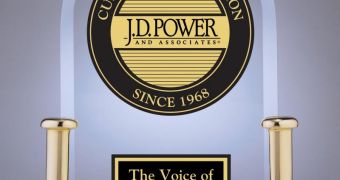The iPhone has come in first in J.D. Power and Associates' smartphone customer satisfaction survey for the fourth time in a row, with a score of 800 out of 1,000.
J.D. Power and Associates measure customer satisfaction with both traditional phones and smartphones across several key factors that determine whether owners hold on to the device for around two years or less.
These are (in order of importance): operation (30%); physical design (30%); features (20%); and battery function (20%). For smartphones, the key factors are: ease of operation (26%); operating system (24%); physical design (23%); features (19%); and battery function (8%).
“For a fourth consecutive time, Apple ranks highest in customer satisfaction among manufacturers of smartphones with a score of 800 on a 1,000-point scale, and performs particularly well in ease of operation, operating system, features and physical design,” J.D. Power and Associates write.
Following apple in the rankings were Motorola, with a score of 791 points, and HTC, with 781.
Also scoring well for the fourth consecutive time was LG, which ranked highest in overall wireless customer satisfaction with traditional handsets with a score of 731.
“LG performs well in all four factors, particularly physical design, features and operation,” the study notes. Following LC were Sanyo (712) and Samsung (709).
“One possible reason for the significant increase in the length of mobile phone ownership is that more customers are delaying an upgrade purchase due to the general economic downturn, in which the expense of purchasing a new device could outweigh the added benefit of owning it,” said Kirk Parsons, senior director of wireless services at J.D. Power and Associates.
“Typically, when upgrading to a new cell phone, there’s the added expense of either subscribing to a more expensive service plan and/or incurring termination fees when switching service providers,” Parsons added.
“Today, consumers are really watching their wallets, and any added discretionary expenses are being considered more thoughtfully than in the past.”
According to Parsons, “there has been an increase in new service offerings during the past several years and that customers are using these services with greater regularity.”
He believes that “wireless providers and device manufacturers need to be sensitive to the mindsets of customers and provide added value where possible in order to drive future business and loyalty,” taking into account today’s economic climate.
The study also found that the average length of time customers keep their traditional wireless cell phone has increased by 17 percent from 2009. Other key findings are noted in the report, which can be found here.

 14 DAY TRIAL //
14 DAY TRIAL //